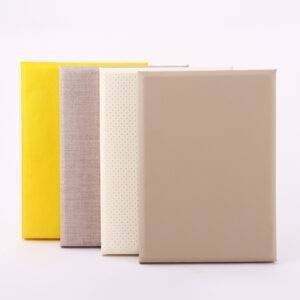There is a difference between sound-absorbing and soundproofing. These are similar-sounding terms and often confused with one another. You can use sound-absorbing to help manage noise and sound. For example, you can use a sound-absorbing wall to dampen the noise in a room. However, soundproofing is different. It is a thicker material that can absorb the sound waves from the outside and reduce noise. They are fascinated when the sound waves can’t pass through the walls or ceilings. Therefore, soundproofing walls can be used to reduce noise and improve sound quality. This can be done in several different ways.
What is sound absorbing?
Sound absorbing is used for interior wall applications. It is used to reduce sound transfer through walls. For example, sound-absorbing is used for walls built between sound sources and the listener. It can reduce how much sound goes through the wall. This is great for residential applications where walls and ceilings can be used to reduce noise. It doesn’t go through the walls and ceilings when sound is absorbed. Instead, it is stopped. It is absorbed by the walls and prevented from reaching the people inside the home.
What is soundproofing?
Soundproofing is used for exterior wall applications. It is used to reduce how much sound travels through exterior walls. The two main types of soundproofing are cavitational and mass reduction. Cavitational soundproofing involves using a dampening material and building cavities behind the walls. This type of soundproofing can reduce noise by up to 50%. Cavitational soundproofing can reduce outside noise by up to 50% by using dampening materials such as blankets, drapes, or sound buffers. Mass reduction looks at the structural integrity of a wall. It can be used as an alternative technique to cavitational soundproofing.
Differences between sound-absorbing and soundproofing
Soundproofing and sound-absorbing are both used to reduce noise. They are considered two different things. The following are some differences between sound-absorbing and soundproofing: Sound absorbing is used for insulation.
Sound absorbing is a method of insulating a wall. It works by slowing down the speed of sound waves. This means it takes longer for the waves to travel through the wall. The result is that there is less energy or “pressure” behind the waves. This means that there is less sound that can get through the wall.
Soundproofing is used for sound treatments. It can reduce sound from one location. It can also change the way that sound travels in another place. In these cases, soundproofing can reduce or eliminate outside noise. It can also change the way that sound is heard. For example, soundproofing can be used to reduce vibrations. Vibrations are sometimes a part of soundproofing. It is used to reduce how much movement is transmitted through a structure. This can reduce the amount of sound transmitted through the system.
Sound absorbing can help reduce vibration
Sound waves transmit vibrations. If the wave’s energy is absorbed, it will be less likely to vibrate something. This can include the building and an often overlooked solution to a noise issue. This can also include the flooring of a building. Many times a vibration issue is not immediately noticeable. Building materials and flooring can absorb the sound waves. This can result in a reduction in the vibration transmitted through the building.
Soundproofing can be used to reduce noise
In many cases, soundproofing can be used to reduce noise. This can include using a soundproofed ceiling to reduce noise from a nearby room. This can consist of using soundproofed walls to reduce noise from one room. It can also include using soundproofed windows to reduce noise from entering the room. This may involve using a soundproofing roller door. When a door is soundproofed, it can reduce noise in the room when it is closed. When it is open, it allows sound to enter the room.
Conclusion
There are many applications for sound-absorbing and soundproofing. It can be used to help dampen noise and vibration. It can also be used to reduce noise. This can be done in several different ways. These include using a sound-absorbing wall, soundproofing, or sound-dampening ceiling. It doesn’t go through the walls and ceilings when sound is absorbed. Instead, it is stopped. It is absorbed by the walls and prevented from reaching the people inside the home.
Professional Acoustics Solution Provided
We have been in the acoustic industry for 12 years. Our team is always ready to answer your questions and provide professional advice. Contact us today at dayin@dayinacoustics.com.



